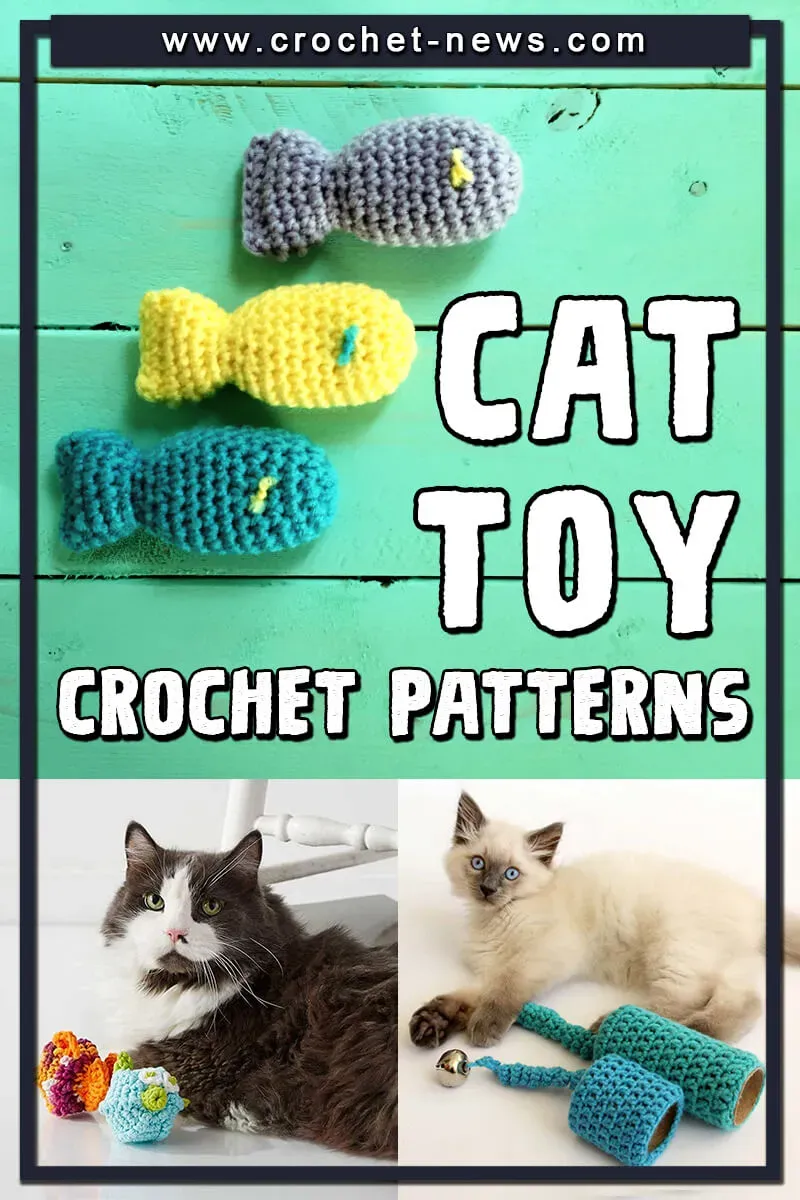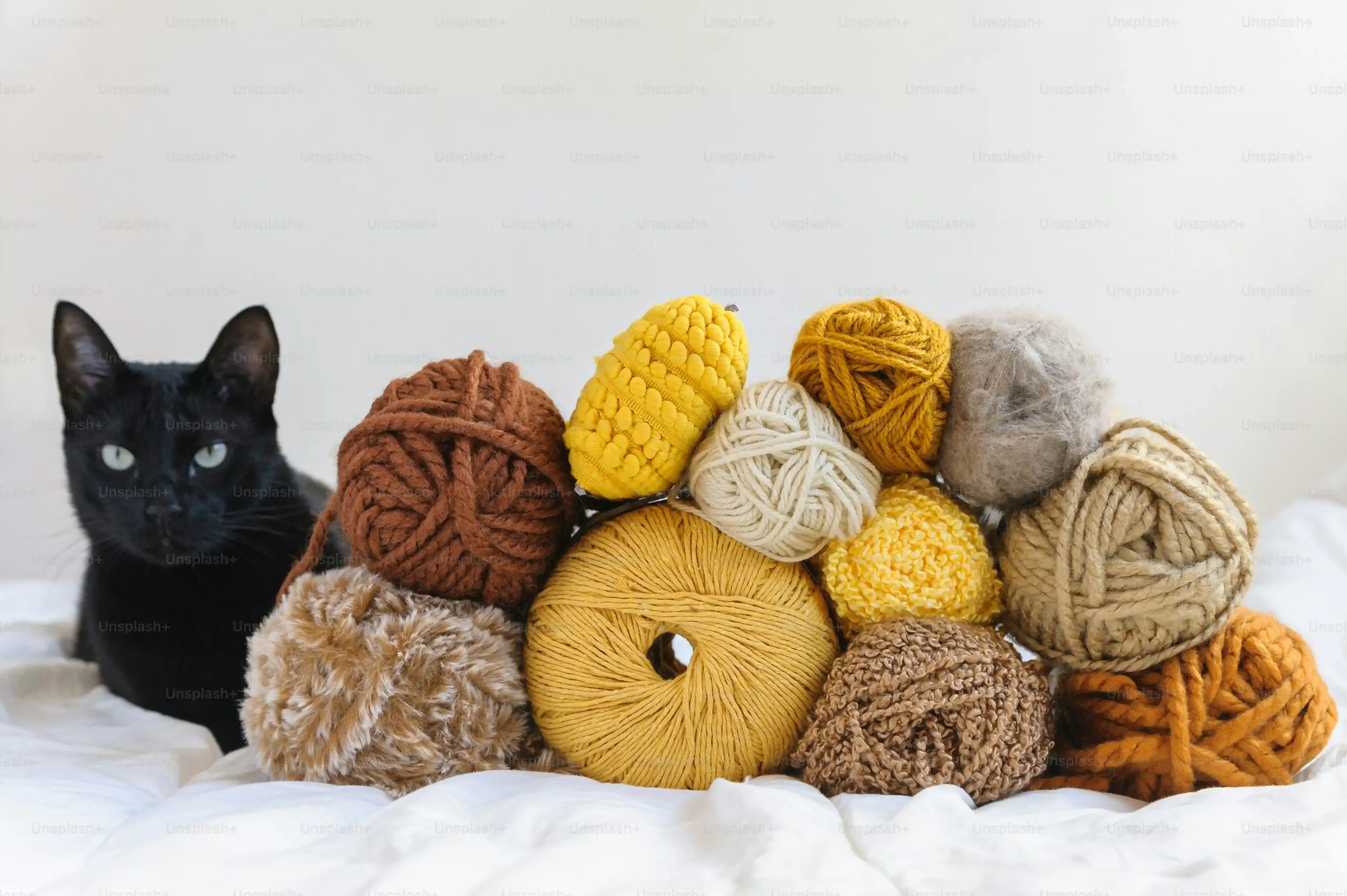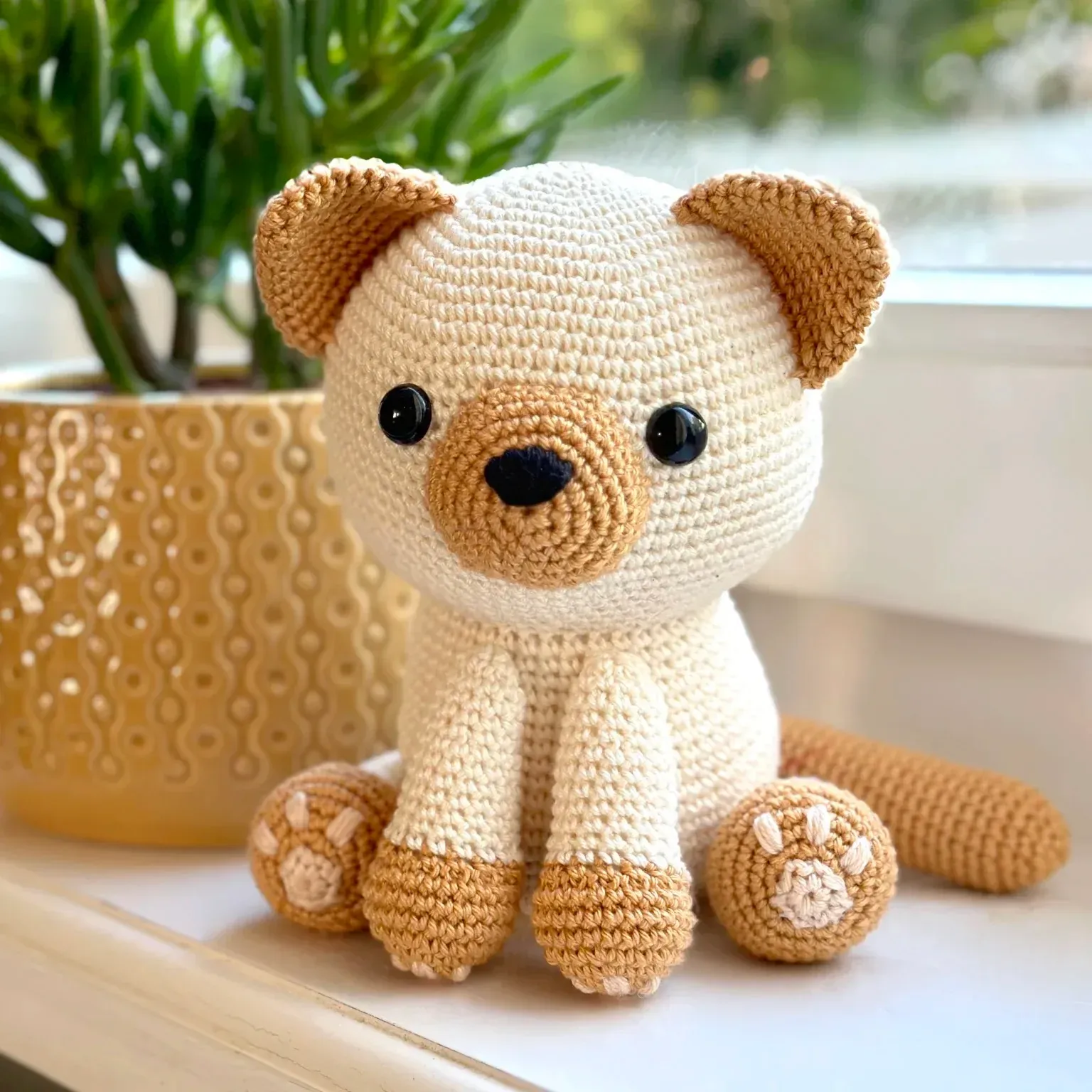Table of Contents
Introduction
Let's be real, cats are adorable little weirdos who can find fun in a dust bunny but turn their noses up at that expensive store-bought toy. If you've got yarn lying around and a feline overlord who demands entertainment, why not whip up something they might actually play with? Forget complicated stitches and confusing diagrams. We're talking about diving into the world of **easy cat toy crochet patterns**. Making your own cat toys isn't just a way to save a few bucks; it's about creating something personal and knowing exactly what materials are going into your pet's mouth. Plus, there's a certain satisfaction in watching your cat bat around something you made with your own two hands (even if they eventually lose it under the sofa). This article is your simple guide to getting started. We'll look at why these easy patterns are perfect, walk through some beginner-friendly ideas, chat about safe materials, and share tips to ensure your crochet creation becomes a hit, not just another neglected dust collector. Ready to hook up some fun for your furry friend? Let's get started.
Simple Starts: Why Easy Cat Toy Crochet Patterns Rule

Simple Starts: Why Easy Cat Toy Crochet Patterns Rule
Skip the Struggle, Get to the Fun
Look, nobody needs a crafting project that feels like deciphering ancient texts just to make something your cat will probably ignore anyway. That's where **easy cat toy crochet patterns** come in. These aren't about mastering complex stitches or spending hours on a single item. They're designed for speed and simplicity. Think basic shapes – balls, little fish, simple mice. If you can do a single crochet or a double crochet, you're pretty much set. It's the perfect entry point if you're new to crochet, or if you just want a quick win project. You can actually finish one in an evening, which is way more satisfying than staring at a half-done sweater for months.
More Than Just Easy: The Real Perks
Beyond the low barrier to entry, there are solid reasons to stick to **easy cat toy crochet patterns**. For starters, you control the materials. No weird plastic eyes that can pop off and become choking hazards, no questionable stuffing. You pick the yarn – ideally something natural like cotton or wool (though acrylic is fine for play, just watch for shredding). You can stuff it with fiberfill you trust, or even fabric scraps. And the best part? You can easily add a little pouch of catnip before closing it up. That's the secret ingredient that turns a simple shape into your cat's new obsession. It's about making safe, customizable fun without the fuss. Here's why 'easy' is actually genius:
- Quick to make (instant gratification!)
- Beginner-friendly stitches
- Low material cost
- Easy to customize size and shape
- Simple to add catnip
- Less frustration, more fun
Grab Your Hook: BeginnerFriendly Easy Cat Toy Crochet Patterns

Grab Your Hook: BeginnerFriendly Easy Cat Toy Crochet Patterns
Start with the Basics: Balls and Simple Shapes
Alright, ready to get your hands on that hook? The absolute best place to start with **easy cat toy crochet patterns** is with the simplest shapes imaginable. Think spheres. A basic crochet ball is just increasing stitches in rounds until you reach the desired size, then decreasing back down. You can use scrap yarn, make them solid or striped, big or small. No fancy techniques needed. Just single crochet (sc) or maybe double crochet (dc) if you want it a bit looser. These are quick, require minimal yarn, and are perfect for practicing your tension and stitch count without the pressure of a complex pattern. My first attempt was a lopsided green blob, and my cat still loved it. Don't overthink it; just make something throwable and chaseable.
Moving Up Slightly: Critters and Rings
Once you've mastered the basic ball, you might want to try something with a little more personality. Still firmly in the **easy cat toy crochet patterns** category, you can find patterns for simple mice shapes – usually just an elongated body with maybe a little tail attached. Some patterns use minimal shaping, keeping it super easy. Another great option is a crochet ring or donut shape. These are just crocheted tubes joined into a circle. Cats love batting these around or even trying to get their heads stuck in them (supervising is key here!). These patterns might introduce a few simple increases or decreases to get the shape right, but nothing overwhelming. You can often find free patterns online or on crafting blogs specifically labeled "beginner" or "easy." Here are a few simple ideas to get you started:
- The classic crochet ball (solid or striped)
- A simple "mouse" shape (elongated oval)
- Crocheted rings or donuts
- Flat shapes like fish or stars (just crochet in rows)
Beyond the Yarn: Materials, Stuffing, and Catnip Safety

Beyond the Yarn: Materials, Stuffing, and Catnip Safety
Picking Your String: Yarn Choices That Don't Spell Trouble
So you've got the hang of those **easy cat toy crochet patterns**, but what are you actually hooking with? This isn't just about color; it's about safety. While acrylic yarn is cheap and comes in every shade imaginable, it can shred over time, and those tiny fibers aren't great for your cat to ingest. Natural fibers like cotton, wool, or bamboo are often better choices. They tend to be more durable and are less likely to cause issues if swallowed in small amounts. Just make sure they aren't treated with harsh dyes or chemicals. Avoid really fuzzy or boucle yarns; they can unravel easily and pose a choking risk. Think smooth, tightly spun stuff. When in doubt, a simple, plain cotton is usually a safe bet.
What's Inside Matters: Stuffing Your Crochet Critters
Now for the guts of the operation. What are you stuffing these little crochet creations with? The standard polyester fiberfill batting you find at craft stores is generally considered safe. It's washable and holds its shape. However, if your cat is a dedicated toy destroyer who manages to rip things open and pull out the stuffing, you might want to consider alternatives. Fabric scraps cut into small pieces work well and repurpose old clothes. You can also use dried beans or rice for weight and sound, but be absolutely certain the crochet fabric is tight enough that they can't escape, and store these toys carefully to avoid moisture which can cause mold. Whatever you use, don't overstuff; a slightly squishy toy is often more appealing to a cat than a rock-hard one. Here's a quick look at stuffing options:
- Polyester Fiberfill: Common, soft, washable. Watch for ingestion if toy is destroyed.
- Fabric Scraps: Recycled, various textures. Cut small to avoid lumps.
- Dried Beans/Rice: Adds weight and sound. Must be securely contained.
- Wool Roving: Natural, springy. Can felt with use.
The Secret Weapon: Adding Catnip (or Not!)
Ah, catnip. The magical herb that turns even the most aloof feline into a rolling, drooling mess of joy. Adding catnip is simple with **easy cat toy crochet patterns**. Before you fully close up the toy, tuck a small pinch or a tiny fabric sachet of dried catnip inside with the stuffing. Don't go overboard; a little goes a long way for most cats. Remember that not all cats react to catnip – it's genetic! If yours doesn't, silvervine or valerian root are other natural attractants you could try. Just ensure any added herbs are securely contained within the toy so they don't spill out. And if your cat is one of the lucky ones who goes bonkers for catnip, maybe make a few toys without it too, just to mix things up and keep the excitement fresh. What's your cat's reaction to catnip? Is it pure bliss, or do they just look at it like you're weird?
Making Playtime: Tips for Crocheting Toys Cats Actually Use

Making Playtime: Tips for Crocheting Toys Cats Actually Use
Think Like a Predator (A Tiny, Fussy One)
you've mastered the basic stitches from those **easy cat toy crochet patterns**. You've got a pile of little yarn creations. Now, how do you make sure your cat doesn't just glance at them and walk away? You need to think about what actually triggers a cat's play drive. They're hunters, even if their prey is usually a dust bunny or your toes under the blanket. This means motion, sound, and texture are key. A static, silent lump of yarn isn't that exciting. Can you add something that dangles? Something that jingles faintly? Something that feels interesting to bite and claw? That little extra effort turns a simple crochet shape into a potential target.
Add the Irresistible Extras
This is where you get creative with those **easy cat toy crochet patterns**. Don't just crochet a ball. Add a simple crocheted tail to make it a mouse. Tie on a few strands of yarn for whiskers. You can also securely attach other cat-safe elements. Think about tying on strips of crinkly material inside before stuffing, or sewing on a few felt shapes. Small bells securely sewn inside (make sure they can't escape!) provide enticing sounds. Natural feathers, again, attached *very* securely, can mimic prey. The goal is to add elements that move unpredictably or make noise when batted. My cat, Mittens, has a simple crocheted mouse I made, but I added a long yarn tail and a tiny bell inside. It's her favorite. Here are some simple additions:
- Crocheted tails or ears
- securely attached yarn strands for whiskers
- Small bells hidden *inside* the stuffing
- Strips of crinkly material (like from snack bags) inside
- Securely sewn-on felt shapes
- Natural feathers (ensure they are firmly attached)
Size, Scent, and Rotation
Finally, consider the practicalities. How big should your crochet toy be? Too small and it's a choking hazard, too big and they can't get their paws around it. For most cats, something mouse-sized to maybe a little larger is perfect. The texture of the yarn matters too; some cats prefer a tighter stitch they can really sink their claws into, others like something softer. And don't underestimate scent. Beyond catnip, simply rubbing the toy on your cat's bedding can make it more appealing. Lastly, don't leave all the toys out all the time. Rotate them! Put a few away for a week or two, then bring them back out. It keeps things feeling fresh and exciting, making those **easy cat toy crochet patterns** creations feel new again.
Happy Crocheting, Happy Cats
So there you have it. Tackling **easy cat toy crochet patterns** doesn't require a fiber arts degree or years of practice. With a few basic stitches and some safe materials, you can create simple, engaging toys that might just become your cat's new favorite thing. It's a practical way to use up scrap yarn, gives you control over what your pet plays with, and frankly, it's kind of fun to make something tangible that brings a little joy (or at least a few good swatting sessions) into their day. Don't expect every toy to be a smash hit, but the effort is minimal, and the potential for purrs is real. Grab your hook and give it a shot.